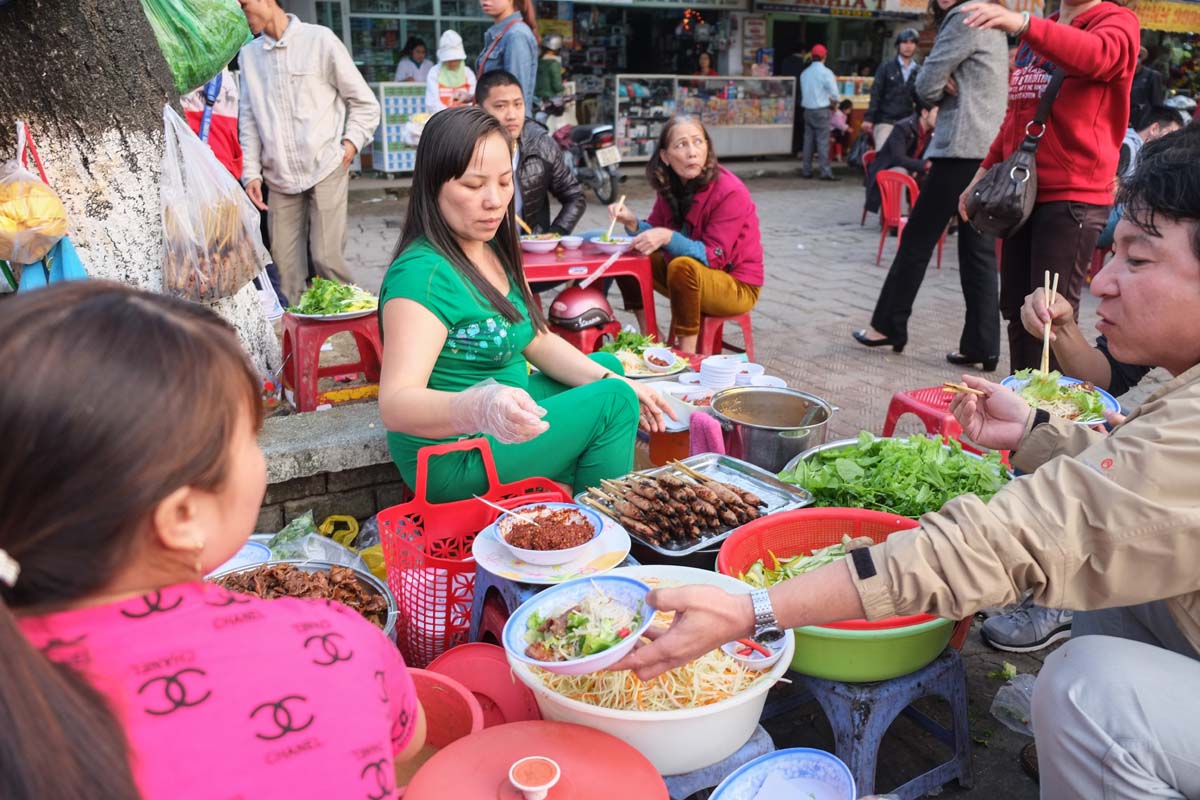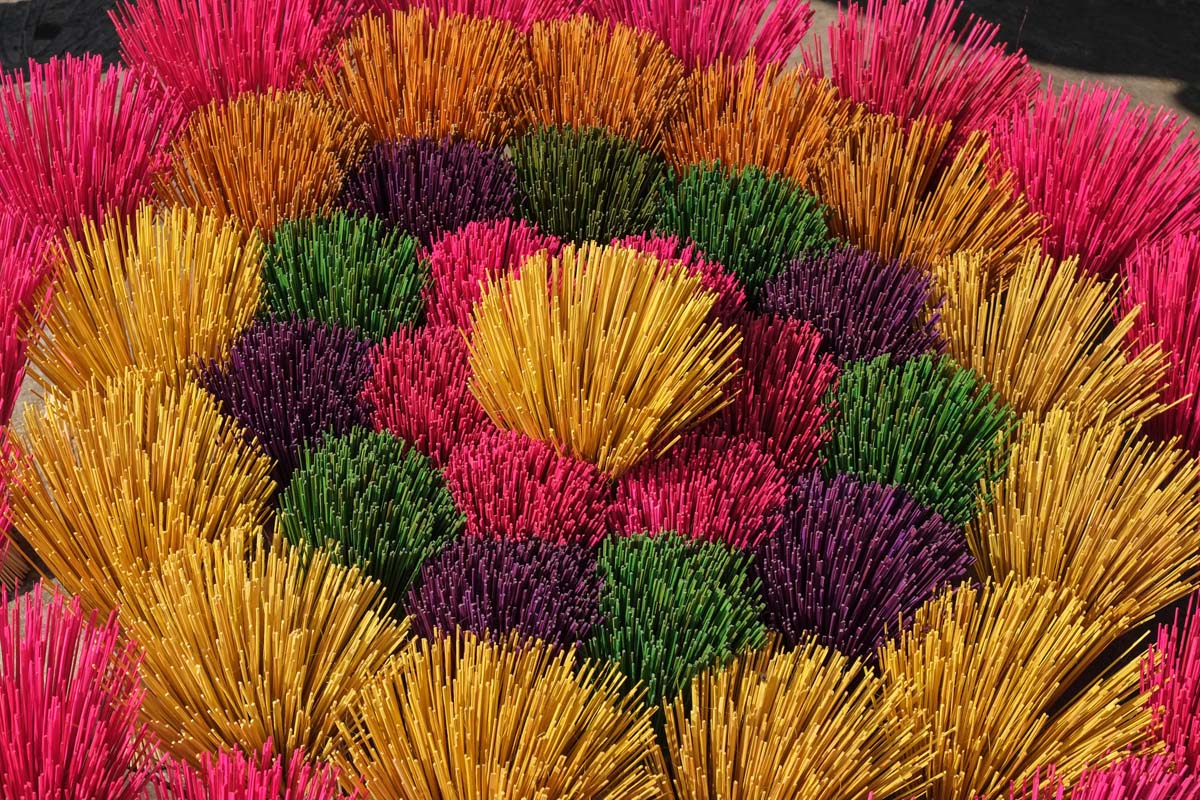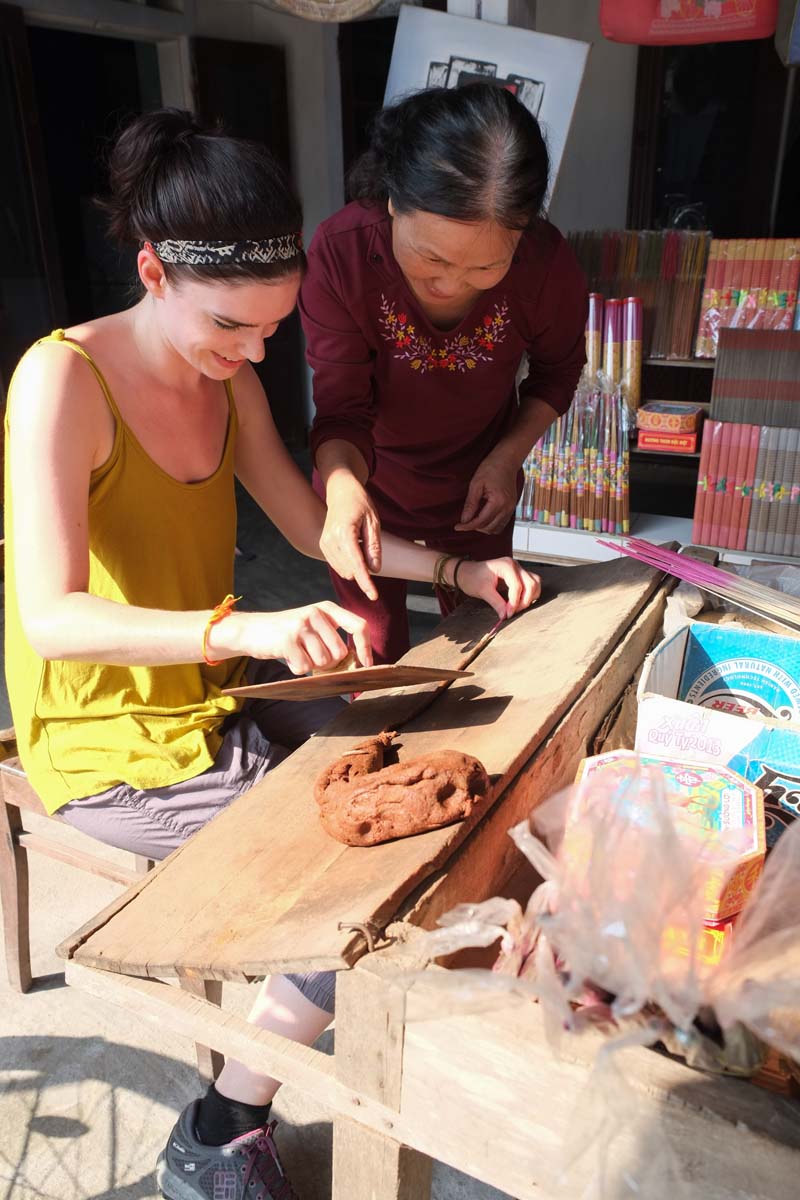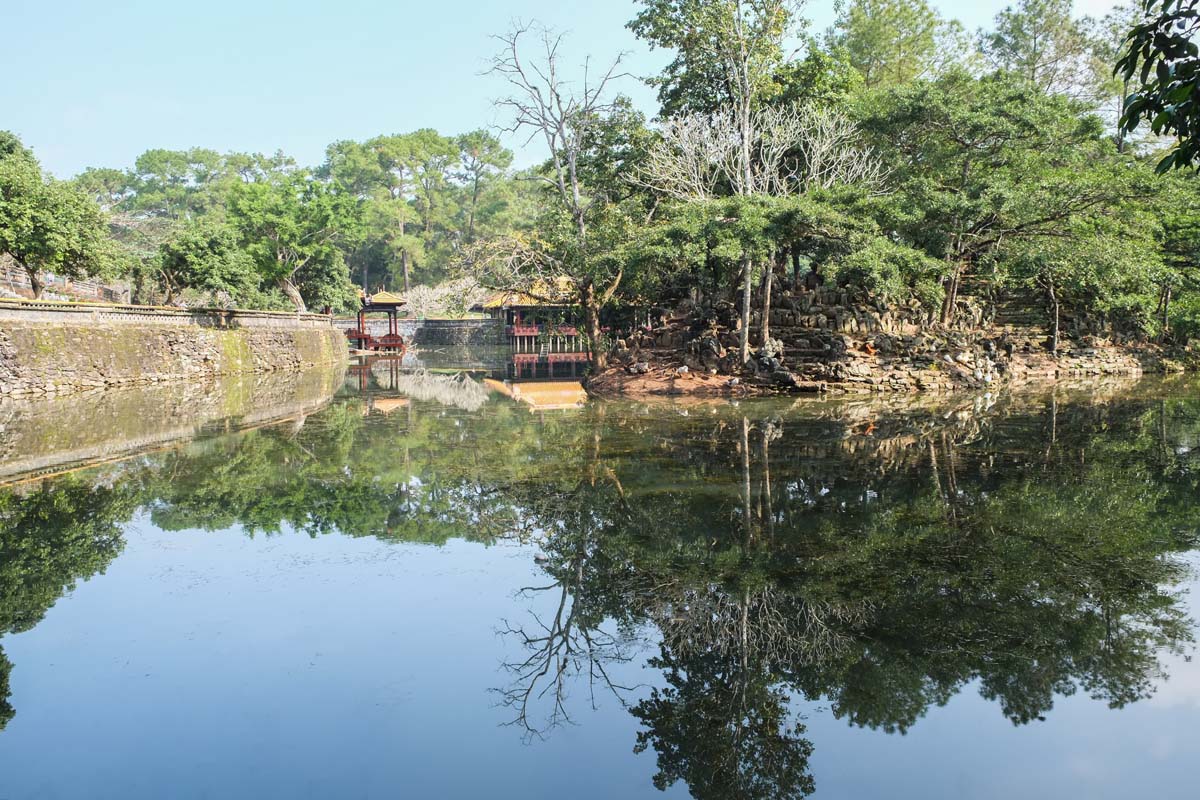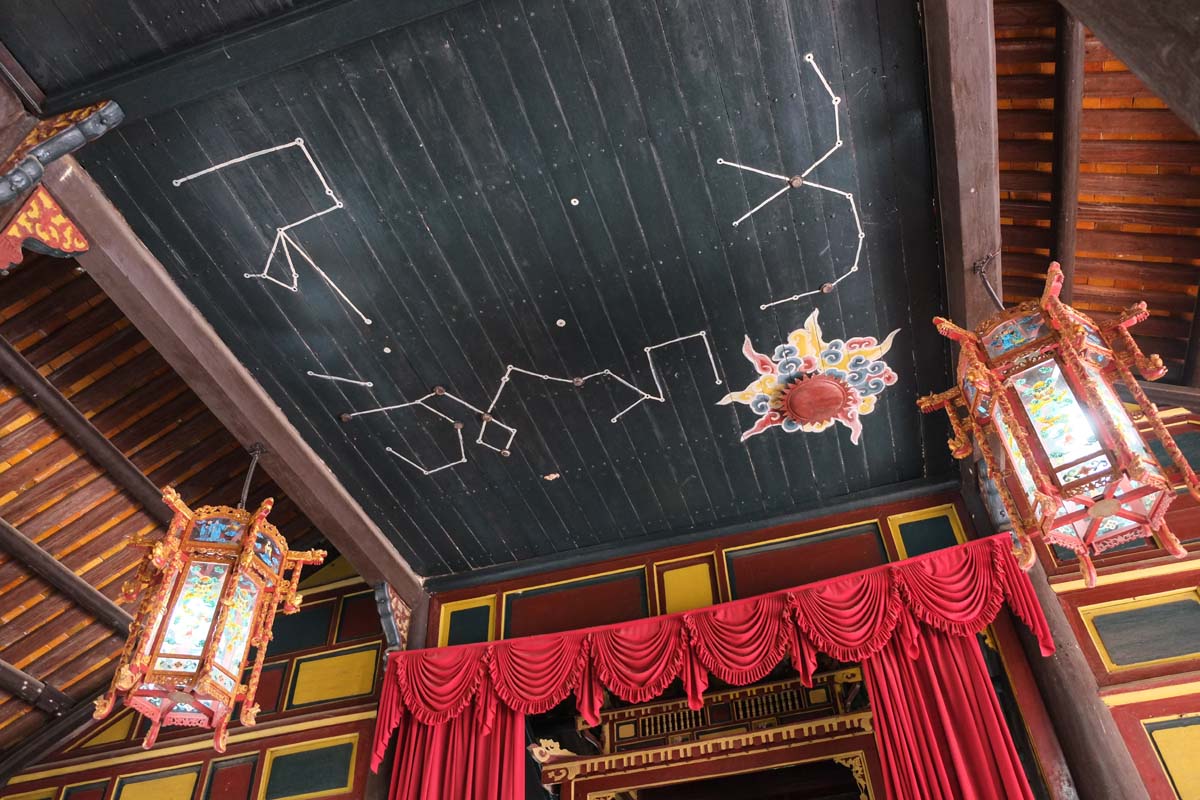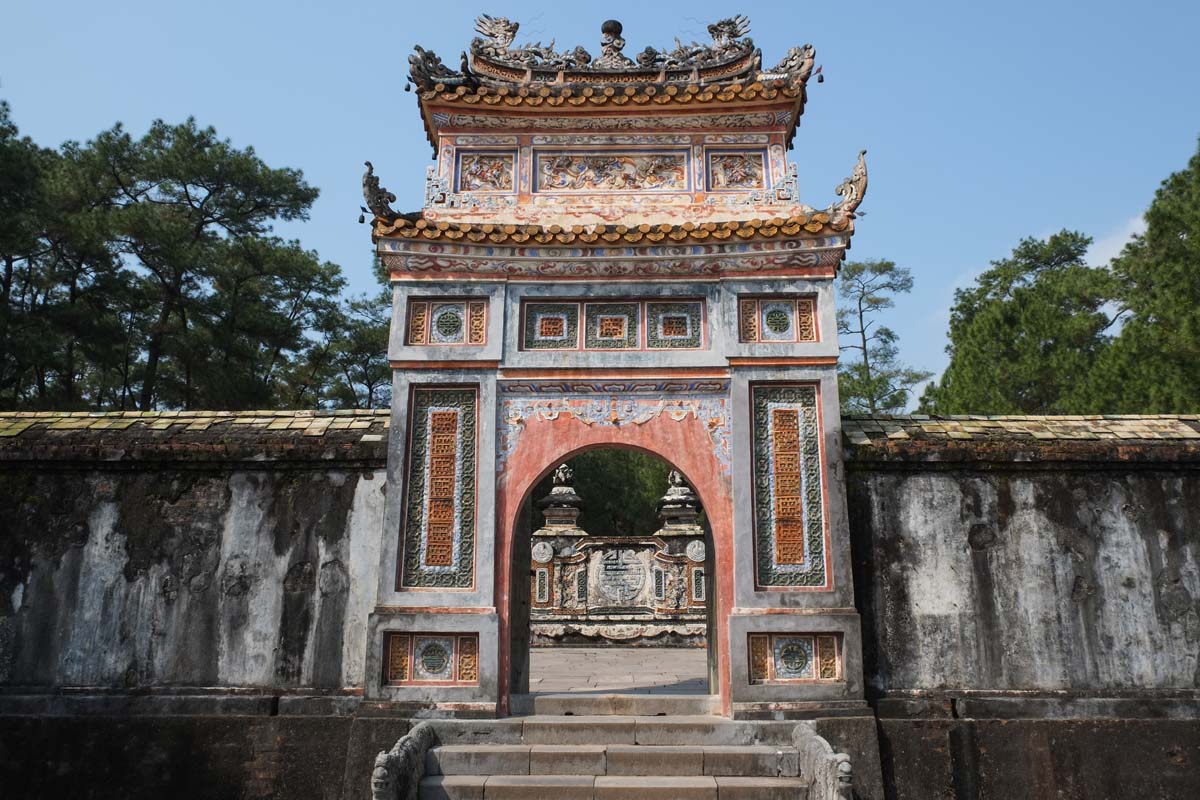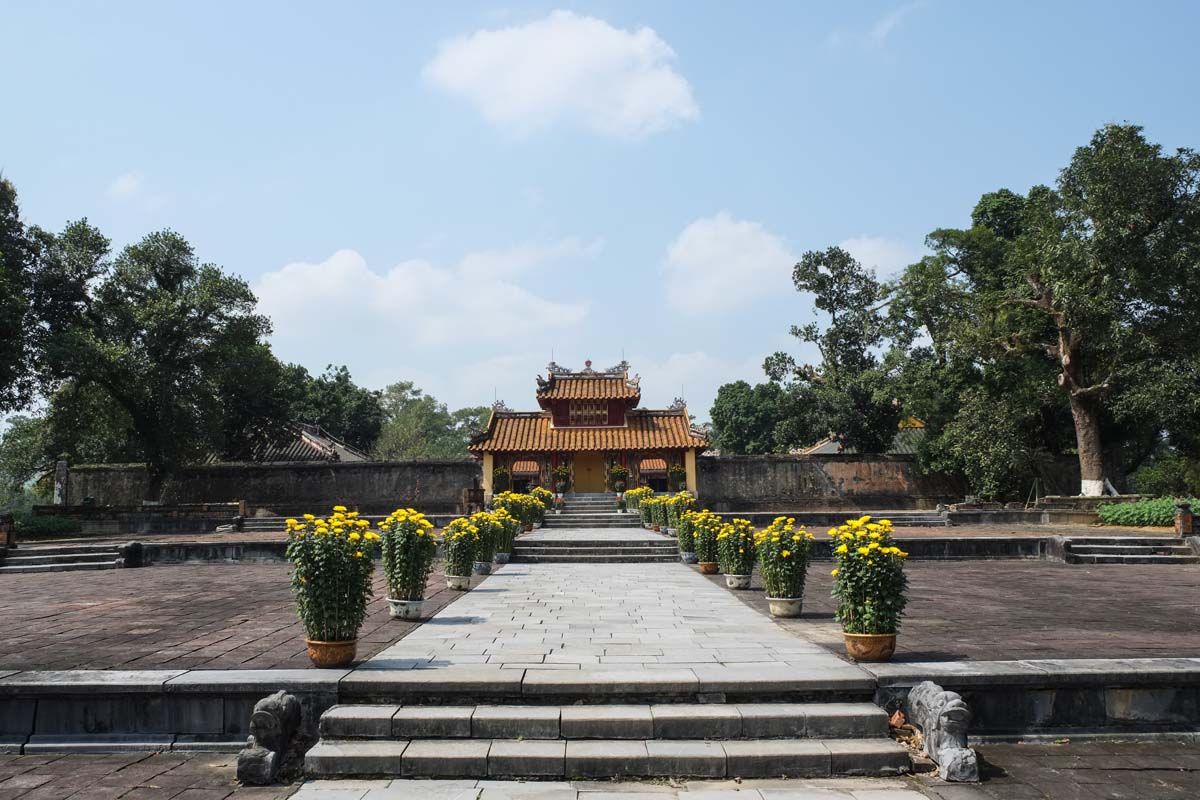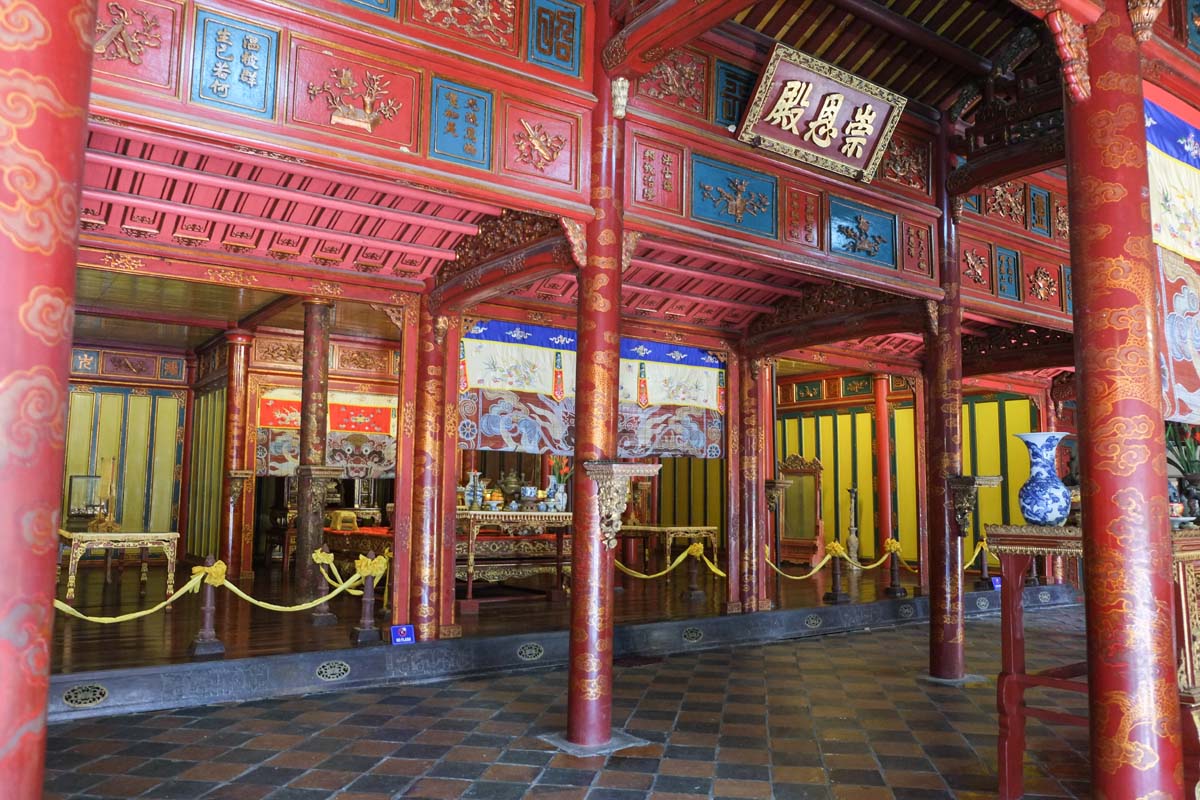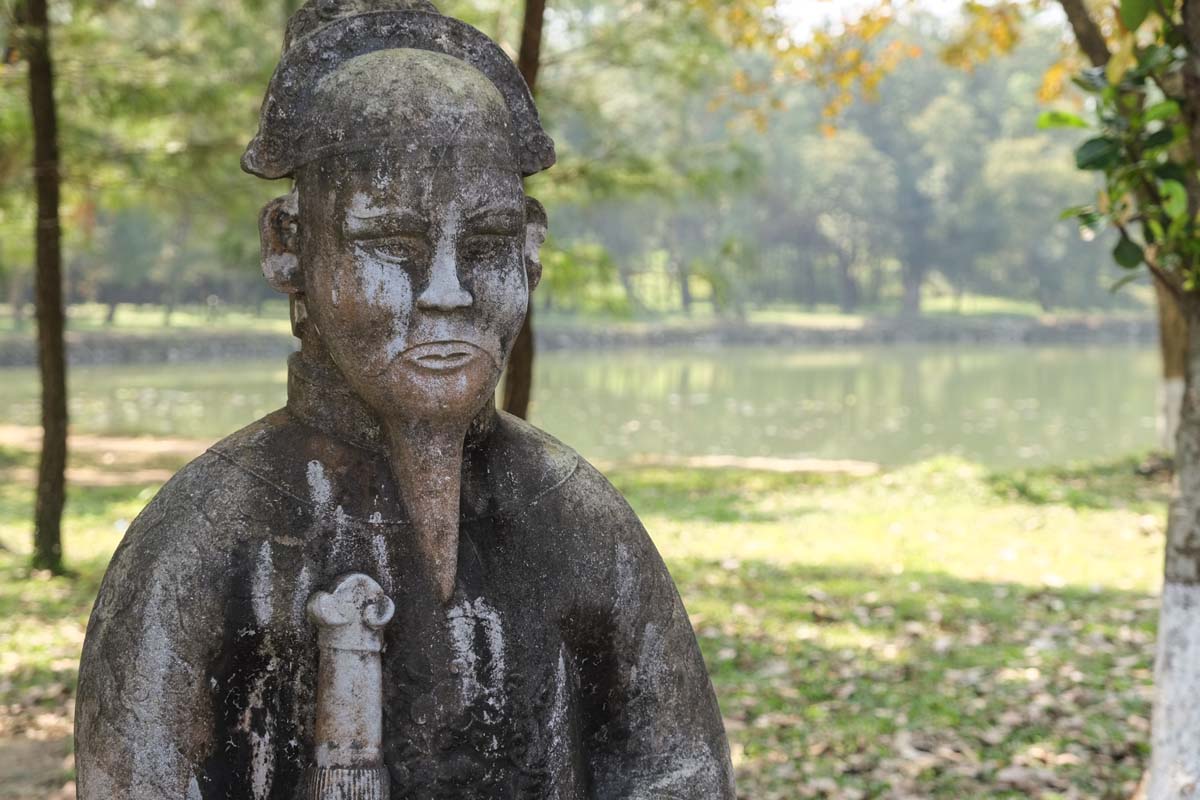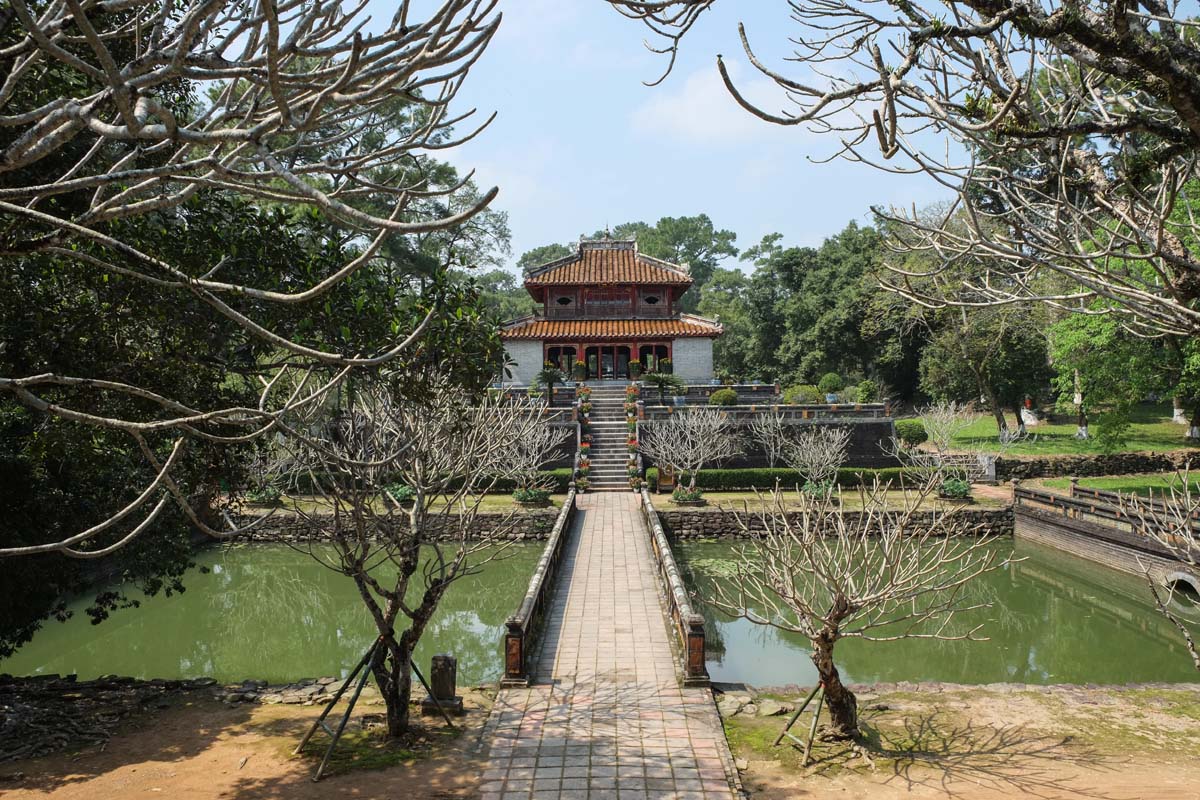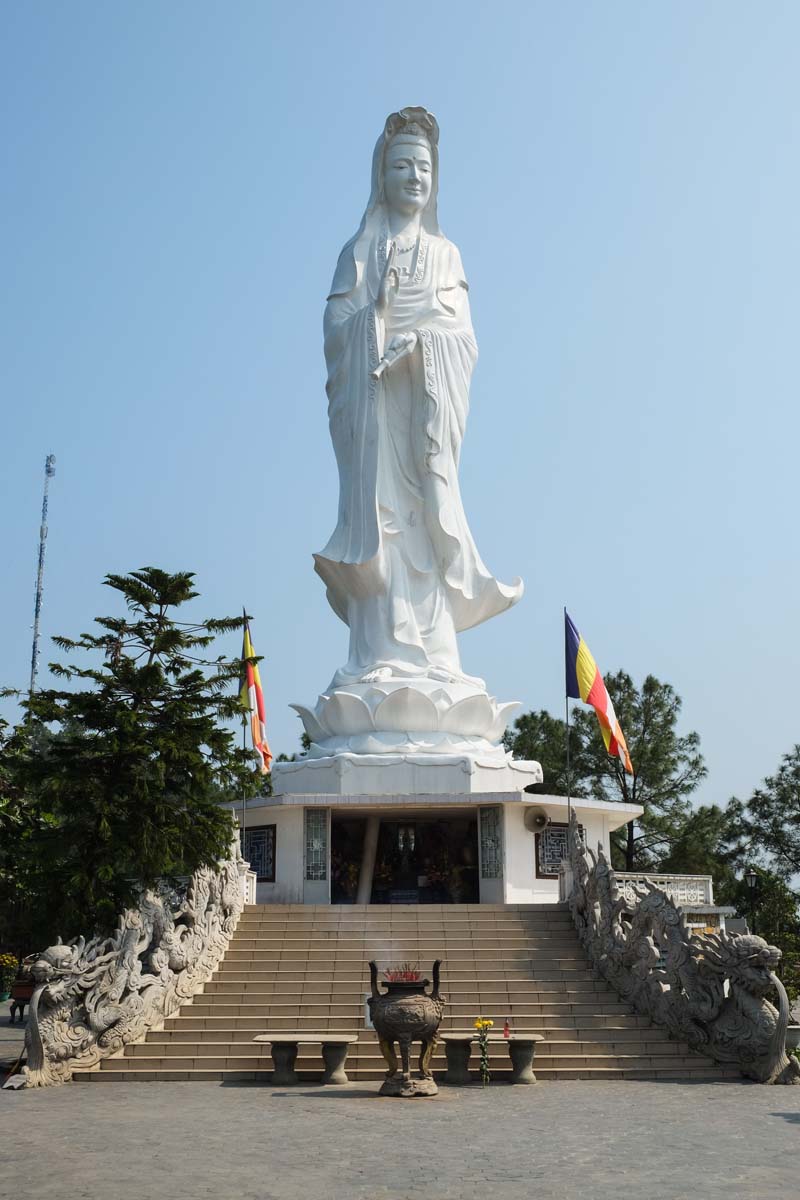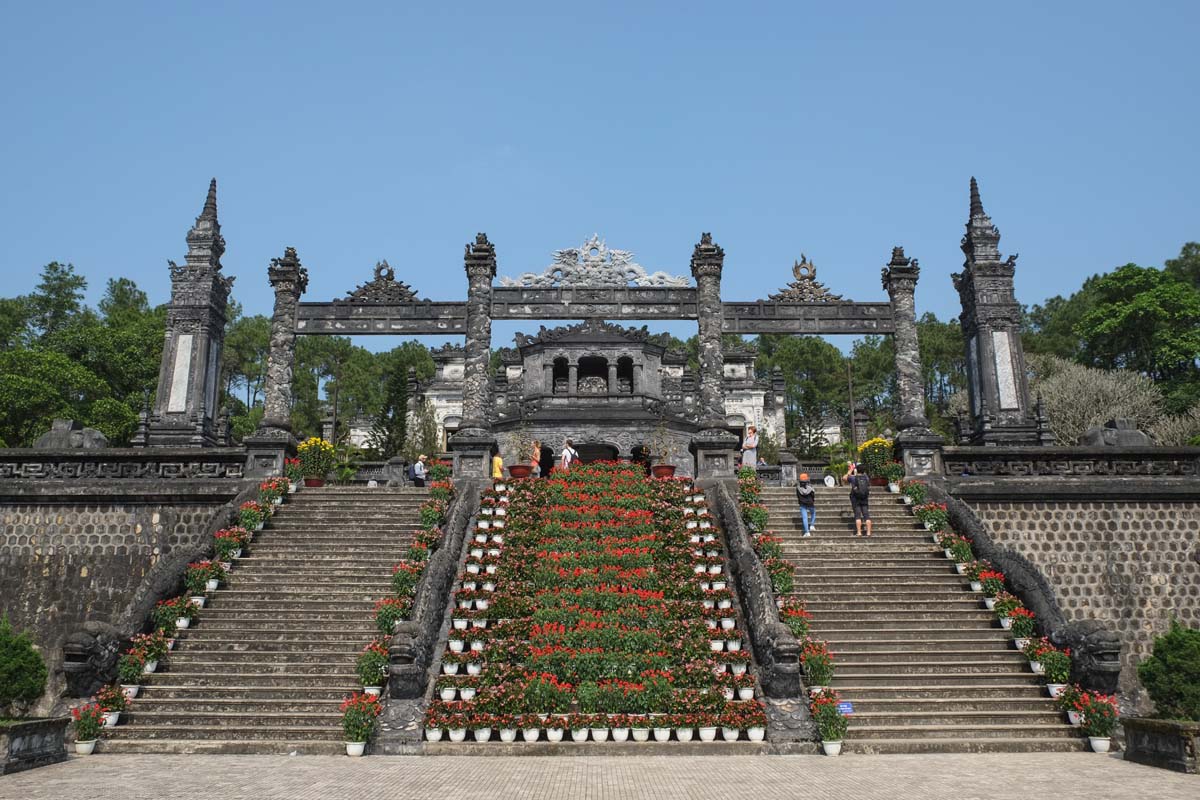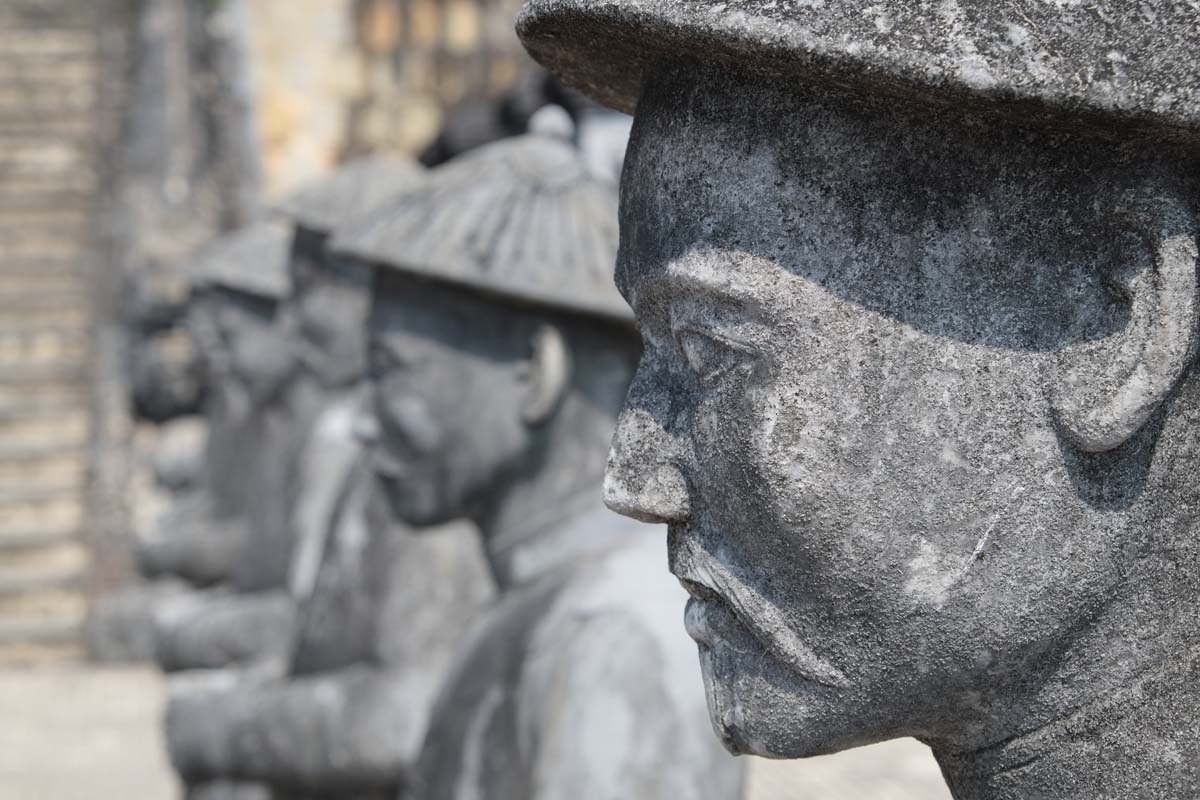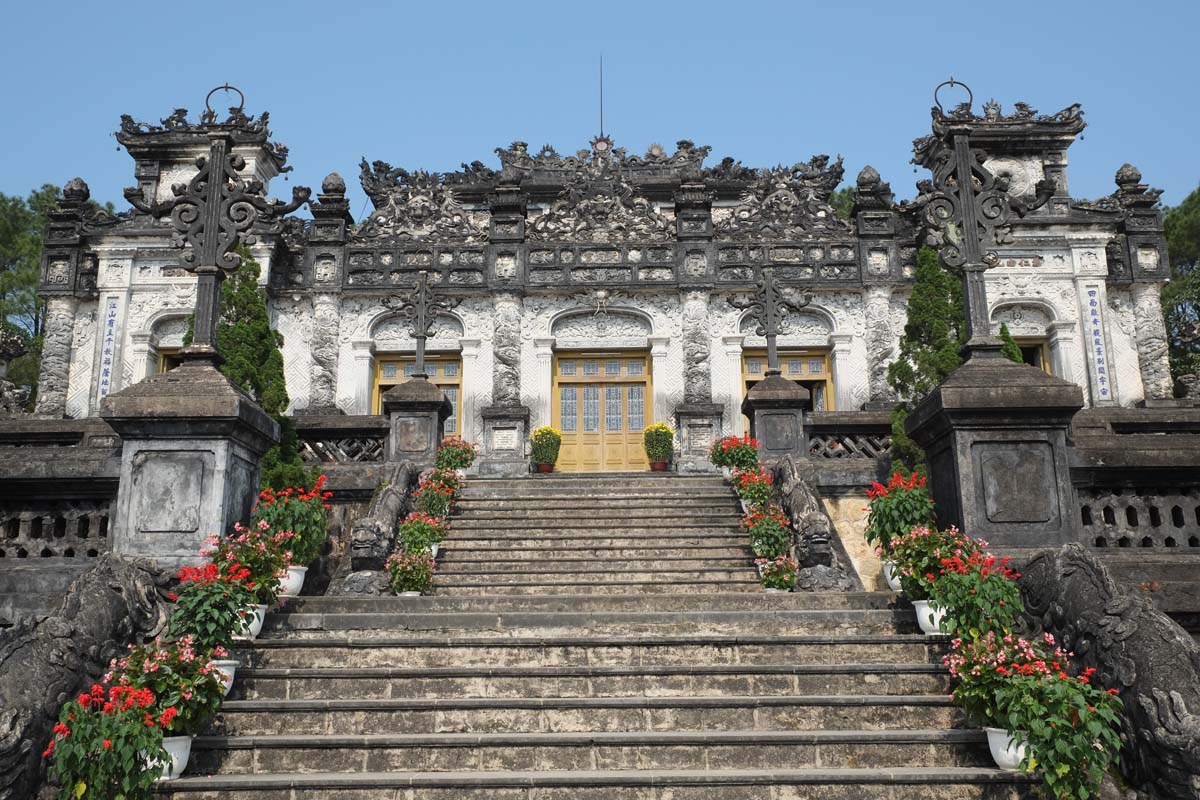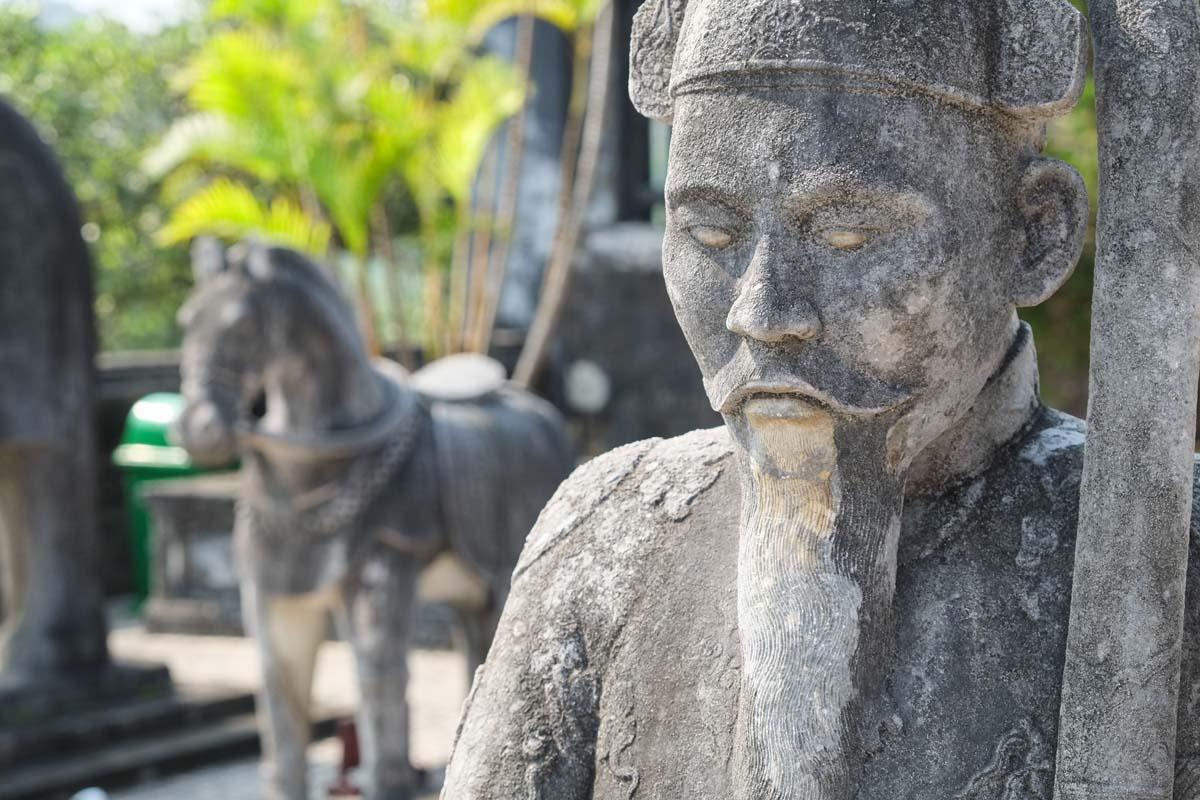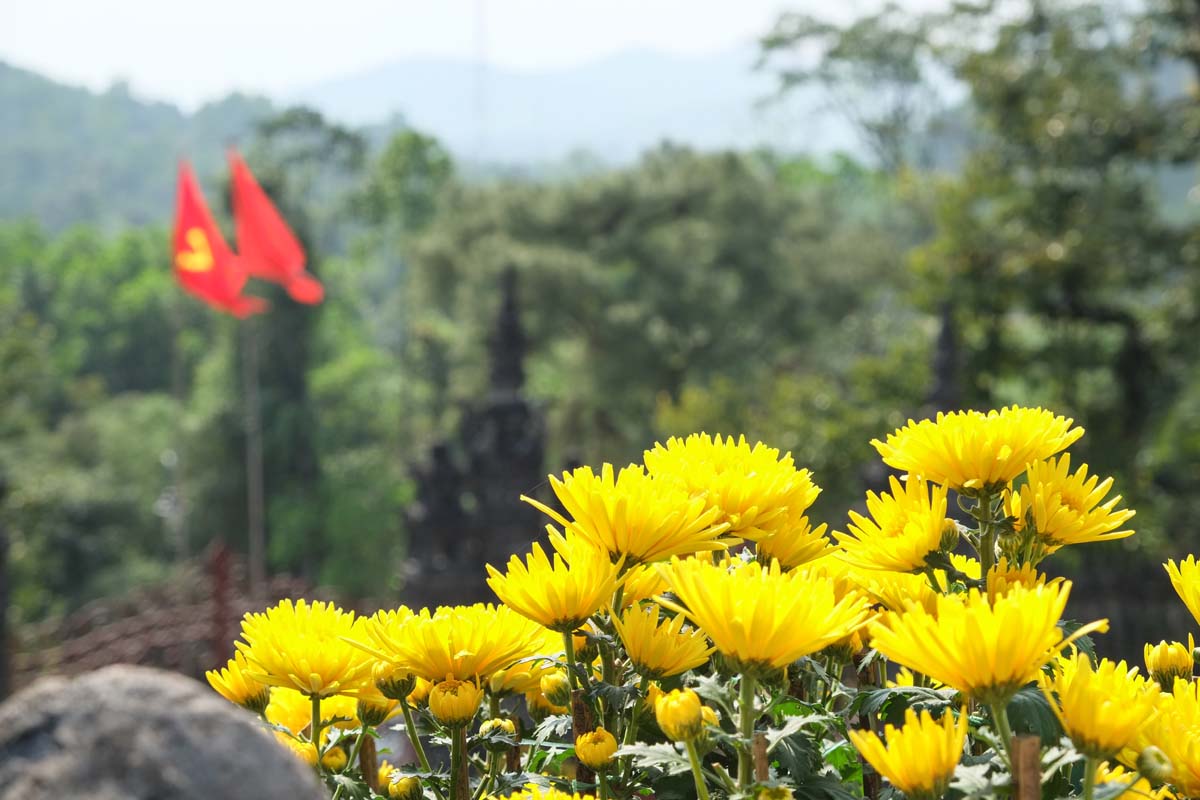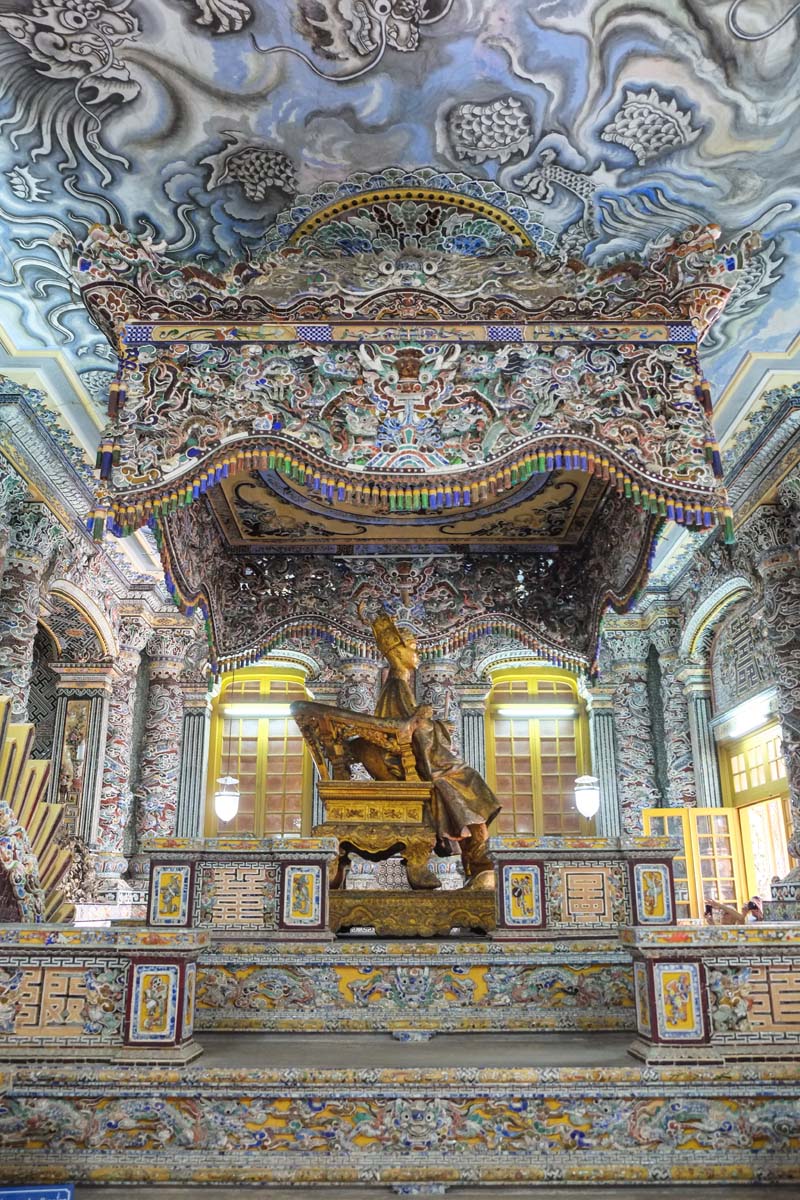We arrived in Huê after a stunning train ride from Da Nang. Huê was the capital city of Vietnam prior to Hanoi and was the last capital ruled by the emperors of the Nguyen dynasty. The city itself is centred around a huge walled and moated area bordering the Perfume river. On our first evening we just crossed the river and had a quick look around before grabbing some street food and getting an early night, ready for a long day of bike riding the following day.
As the last emperors were essentially puppet rulers under French colonial control, they had little actual ruling to do. What they did spend their time on was creating beautiful mausoleum sites in the surrounding countryside in which to spend time in their remaining years and see out eternity.
The mausoleums are all outside of Huê in the surrounding countryside. The best way to explore them is by bicycle, so we rented a couple from our hotel and set off. We had fixed gear bikes but found the routes to be quite hilly, if you can get hold of a bike with gears you’ll find life much easier. We left early too, to try and beat the rush of the coach party tours and see the sites at their most peaceful.
On the way to the first site we happened upon an incense shop. As we stopped to get a picture of this pretty display…
the lady who owned the shop came out and insisted on giving us a demonstration of incense making and even let Ali have a go of rolling out her own stick of incense. We bought a few packs off her in the end, after negotiating the price down first of course!
We made it to the first mausoleum, that of the emperor Tu Duc, in good time and ahead of most of the day-trippers. Each of the large tombs are 80,000VND ($4) per person to enter, plus you have to pay a small fee for parking outside at some.
Tu Duc’s mausoleum was a large country estate complete with a small lake and landscaped gardens. There was a pagoda and living quarters for himself and his family. Around the back of the lake was the tomb itself, a grand structure with guardian statues and ornate carvings. Further around were the tombs of the Emperor’s wife and other family members, although they were not nearly as grand as his own. Amazingly, Tu Duc isn’t actually buried in his tomb, but nearby in an unknown location – the two hundred servants who were involved in the burial were decapitated so no one could find out and rob his grave!
We left the tomb of Tu Duc and moved on down the Perfume river to seek out the Tomb of Minh Mang. We crossed over the river on a large bridge and a few minutes up the road there was a roadside stall where we were able to park our bikes up and walk the final 200m to the entrance down a thin mud path.
Minh Mang’s site proved to be even more serene and impressive than Tu Duc’s. There were lakes and park-like grounds surrounding the pagodas and central funeral mound. More guardian statues lined the route, along with well tended flowers and gardens. If you are planning a trip, this is a great spot to stop for a snack/drink.
On our way to Minh Mang’s tomb we spotted a huge white statue sticking out of a nearby hillside. We had the freedom of our bikes so we sought it out. Towards the hill a kind local pointed the final part of the way. We parked our bikes at the base of a steep path and began to climb. Towards the top the statue loomed large; a huge white rendition of the Bhuddist Goddess of Mercy towering over the nearby trees.
The view from the top was just as impressive as the statue too.
We had one final site to visit on our list; that of the last Nguyen emperor, Khai Dinh. This mausoleum was set into a hillside, with steep steps leading up to each of the four pavillions and great views of the surrounding area from the top. Again statues of merchants, soldiers and elephants guarded the route up and immaculately kept flowerbeds added a splash of colour.
At the top was the tomb itself. Khai Dinh was fond of European style and the interior definitely had a classical Italian influence. Combined with the Vietnamese eye for colour and detail it made for the most stunning site of the day.
The heat of the day was at its peak and, although there were other smaller sites in the area our stomachs took charge. We cycled back towards Huê to seek out a late lunch and rest up a bit, safe in the knowledge that we had seen the best the Nguyen Emperors had to offer.

